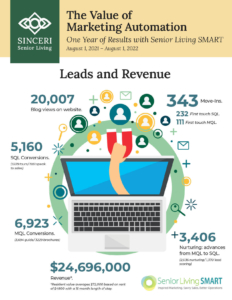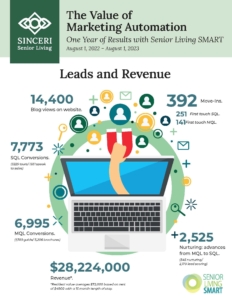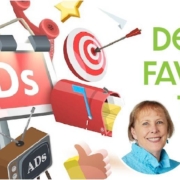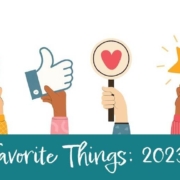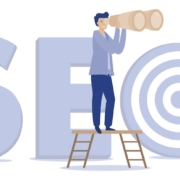How the Move-In Process Can Affect Your Senior Living Marketing
 Too many senior living marketing and sales teams think their work is done once a prospect signs a lease. The problem with this thinking? The teams are missing an opportunity to help residents AND the community at the same time.
Too many senior living marketing and sales teams think their work is done once a prospect signs a lease. The problem with this thinking? The teams are missing an opportunity to help residents AND the community at the same time.
Remember, life doesn’t get easier for prospects once they agree to move into your community. It’s just the opposite. The prospect faces a hot mess of stress and anxiety between the lease signing and the actual move-in. Tasks include picking through cherished belongings, deciding what to toss or donate, preparing the house to go on the market, and packing what they want to take with them. Emotions run high—and even more so when adult children are involved.
Sure, the marketing and sales team could say, “Not our problem! We’ll see you when you arrive.”
And yet, it’s in the community’s best interest to make this transition as seamless as possible. And by “seamless,” we mean offering concrete ways to help residents and their families reduce stress and even find joy during the chaos.
Why? Consider the following:
- Happy residents (and their families) will participate in your referral programs. And guess what? Referrals from current residents and their families are GOLD. They tend to have much better conversion rates while requiring the least heavy lifting. But happy residents don’t just happen. It will be much harder to inspire residents still smarting from a difficult move to get into referral mode.
- Happy residents (and their families) will write glowing reviews. Reviews are essential to the senior living sales process. Prospects crave current reviews, not ones from three years ago, so you must constantly prime the referral pump. The best time to ask for a review is right after the resident moves in and when everything is still fresh. But what happens if the trauma of a hard move now overshadows the fantastic rapport your sales rep built? Suddenly, your hope for a solid 5-star review is fading.
Remember, moving into your community might feel like a cup of coffee to you. But it’s a big deal for the family facing such a daunting undertaking.
Study after study suggests that moving is the most stressful event in life. When you add in older age, illness, or the recent death of a loved one (like a spouse), the stress grows exponentially.
No wonder people would rather stay in their homes—even if the home is unsafe or lonely. Here’s the thing: If you know that the physical act of moving is the barrier to entry, why wouldn’t you do everything in your power to break down this barrier?
And guess what? If you effectively break down this barrier, you’ll do something awesome for your community while you’re at it: differentiating it from all the other communities that don’t bother with this step.
Develop a helpful post-deposit process for new residents and their families—and differentiate your community in a good way.
Coming up with a compelling marketing differentiator in senior living is challenging since most communities sell the same amenities, the same levels of care, and the same promises about great food and a stellar staff.
So, if your community becomes known for reducing stress during the transition, this can become an excellent point of differentiation.
Below are three ways to accomplish exactly that:
1. Put your marketing automation to good use with helpful workflows.
Thanks to marketing automation, your team can create email workflows to assist the sales team during this post-deposit stretch before the prospect moves in. Workflows can include move-in-day reminders, what residents can expect during their first week or month, and answers to FAQs.
Follow a cadence that makes sense—these email “touches” should correspond to when the new resident is moving in. For example, someone joining your community within 30 days will need an accelerated workflow that surfaces the most critical info, like move-in day protocol: when to arrive, where to go, who will be available to help carry belongings, and what to expect during the first dining experience.
On the other hand, people who are moving into your community 90 days out will follow a different cadence. Mixed in with the “just the facts” messages can be other messages highlighting the lifestyle and upcoming events.
Another smart strategy is digitizing all move-in paperwork. Keep in mind that adult children are often responsible for managing the paper trail for their parents—and many of these adult children are under 65. They expect a digital experience, like a resident portal, not a binder of papers and forms.
2. Encourage (and reward) salespeople who stay in touch with their recently closed prospects.
The new resident and their family likely developed a strong rapport with the salesperson. To have them suddenly disappear will feel disorienting. And yet, this disappearing act is what happens in most communities.
Instead, encourage your salespeople to stay in regular touch with their recently closed customers. Encourage them to serve as the new resident’s primary point of contact during this transition. (Or, if budget allows, a move-in or transition specialist might be a new title to create in your community.)
And we’re not talking about the salesperson simply sending an email or leaving a voice mail just so they can cross the task off their to-do list. Instead, they should:
- Ask how the soon-to-be resident is doing. Pay attention to what they say—and what they don’t say. Do they seem frazzled? Depressed? Anxious? Are they struggling with a specific task, like finding movers? How can you help? The best senior living salespeople will have a network of trusted vendors that can address myriad issues, from downsizing to moving.
- Consider making a kind gesture, like bringing the soon-to-be resident some goodies from the community’s dining room (which will serve as a reminder about what the resident has to look forward to in your community).
- Actively listen. Sometimes offering an empathetic ear is all the future resident (or their family) needs. Even the best salesperson on the planet won’t be able to reduce the stress level to zero. But letting the future resident vent, or the adult daughter, or the adult brother squabbling with the adult daughter can help lighten the load.
Keep in mind that most salespeople won’t be used to having these sorts of interactions with recently closed customers. But if you want your community to become known for helping new residents transition successfully, you must encourage your salespeople to be part of the process. Encourage their involvement and find ways to reward them. What motivates sales folks more than incentives, right?
3. Offer relocation services—and don’t forget to promote the service long before the prospect signs the lease.
Debbie Howard, our CEO and Co-Founder, recently did a podcast with Maureen Longoria, the co-founder of LivNow Relocation, which specializes in senior living relocation services.
Longoria says her team is trained in “empathy and action.” Older adults need big doses of empathy since so many emotions are tied to their personal possessions. Adult children are often more focused on logistics—the action items—like securing good movers.
Longoria says communities shouldn’t underestimate how much the burden of moving can influence a person’s decision about whether to bother moving at all. In the podcast, she discusses a survey where participants considering a move into senior living were asked what they needed the most help with.
“The number one thing was the physical aspect of moving,” Longoria says. “The number two thing was finding the right community. They were very concerned about that. But the number three thing was organizing and downsizing. Number four was selling the home. And then number five was financial.”
Considering the physical act of moving occupies the top position (and relevant tasks occupy other positions in the top five), offering relocation services makes a lot of sense, and doing so can go a long way in differentiating your community from others. This is why the sooner communities inform prospects about this service, the better. Don’t wait until the prospect signs the lease to tell them about the services. Instead, promote that your community takes a proactive approach in helping new residents transition from their home to senior living.
If your senior living community offers relocation services, do the following:
- Create a dedicated landing page on your site about the relocation services. Ideally, make it available and visible in the top-level navigation. Discuss how this service can benefit your future residents. Share testimonials from residents who’ve used the services. If the service doesn’t cost the resident anything, highlight this point.
- Promote the services in all pre-tour communications. For example, when someone schedules a tour online, the thank-you page and the auto-responder email should highlight this service and explain how people can contact a counselor for a free consultation.
- Highlight the service in all post-tour communications. Remind people about this service—and make it easy for someone to contact a relocation counselor.
- Make virtual intros. If the salesperson senses a once-hot lead is getting cold feet, they should take the initiative and make a virtual introduction between the prospect and a relocation counselor.
- Promote the service throughout the community’s website, social media platforms, and marketing events. Again, if the process of moving is one of the biggest barriers to entry, BREAK DOWN THIS BARRIER.
Bottom line: the most successful communities think BEYOND the sale.
Need help figuring out post-deposit workflows and how to align your marketing and sales teams so they can help transition new residents without adding more work on anyone’s plates? We can help with this and any other senior living marketing challenges. Get in touch and let’s chat.





